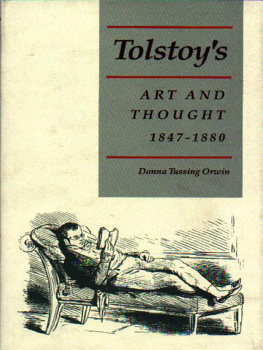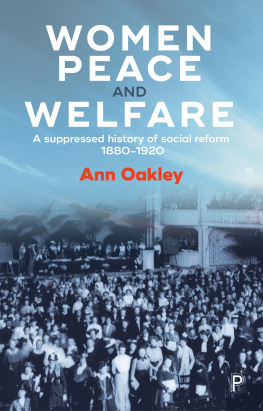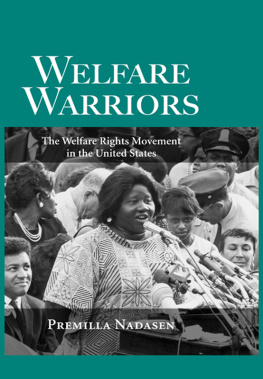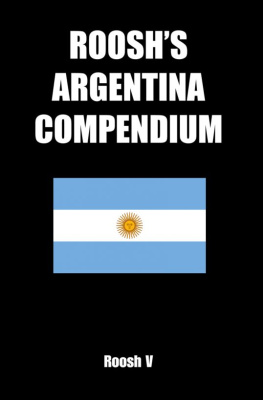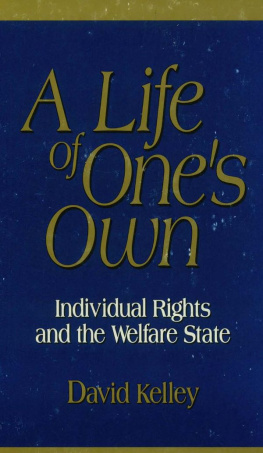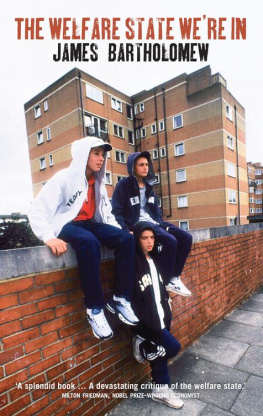Donna J. Guy - Women Build the Welfare State: Performing Charity and Creating Rights in Argentina, 1880-1955
Here you can read online Donna J. Guy - Women Build the Welfare State: Performing Charity and Creating Rights in Argentina, 1880-1955 full text of the book (entire story) in english for free. Download pdf and epub, get meaning, cover and reviews about this ebook. year: 2008, publisher: Duke University Press, genre: Politics. Description of the work, (preface) as well as reviews are available. Best literature library LitArk.com created for fans of good reading and offers a wide selection of genres:
Romance novel
Science fiction
Adventure
Detective
Science
History
Home and family
Prose
Art
Politics
Computer
Non-fiction
Religion
Business
Children
Humor
Choose a favorite category and find really read worthwhile books. Enjoy immersion in the world of imagination, feel the emotions of the characters or learn something new for yourself, make an fascinating discovery.

- Book:Women Build the Welfare State: Performing Charity and Creating Rights in Argentina, 1880-1955
- Author:
- Publisher:Duke University Press
- Genre:
- Year:2008
- Rating:3 / 5
- Favourites:Add to favourites
- Your mark:
- 60
- 1
- 2
- 3
- 4
- 5
Women Build the Welfare State: Performing Charity and Creating Rights in Argentina, 1880-1955: summary, description and annotation
We offer to read an annotation, description, summary or preface (depends on what the author of the book "Women Build the Welfare State: Performing Charity and Creating Rights in Argentina, 1880-1955" wrote himself). If you haven't found the necessary information about the book — write in the comments, we will try to find it.
Donna J. Guy: author's other books
Who wrote Women Build the Welfare State: Performing Charity and Creating Rights in Argentina, 1880-1955? Find out the surname, the name of the author of the book and a list of all author's works by series.
Women Build the Welfare State: Performing Charity and Creating Rights in Argentina, 1880-1955 — read online for free the complete book (whole text) full work
Below is the text of the book, divided by pages. System saving the place of the last page read, allows you to conveniently read the book "Women Build the Welfare State: Performing Charity and Creating Rights in Argentina, 1880-1955" online for free, without having to search again every time where you left off. Put a bookmark, and you can go to the page where you finished reading at any time.
Font size:
Interval:
Bookmark:
 Women Build the Welfare State
Women Build the Welfare StateDUKE UNIVERSITY PRESSDurham and London 2009
2009 Duke University Press
All rights reserved
Printed in the United States of America on acid-free paper
Designed by Amy Ruth Buchanan
Typeset in Cycles by Keystone Typesetting, Inc.
Library of Congress Cataloging-in-Publication data appear on the last printed page of this book.
 For my Tucumn Family
For my Tucumn Family
Both good fortune and great help from my Argentine friends and coworkers enabled me to expand this book from a discussion of street children to one that looks at feminist and female philanthropic child advocacy and the welfare state. My understanding of both themes would have been far different if I had not finally received permission to research heretofore closed archives. After eight years of persistence and, with the help of Dora Barrancos, then head of the Womens Studies Program at the Universidad Nacional de Buenos Aires and a former legislator for the Government of Buenos Aires, I obtained permission to consult the archives of the government agency charged with monitoring state institutions for children and other legal issues associated with minors and the family. Currently known as the Consejo Nacional de Niez, Adolescencia y la Familia [the National Council for Childhood, Adolescence and the Family, CNNAF], it holds many of the archival papers of child welfare institutions (including the Society of Beneficence) that are missing from the Archivo General de la Nacin [National Archives of Argentina, AGN], as well as more than five hundred thousand files on children who entered state institutions. Significantly, the portion from 1880 to 1955 that I was allowed to consult had approximately fifty thousand files. Since that date the numbers have soared tenfolda clear indication that the welfare state in Argentina continues to function, albeit in a more limited and poorly financed way. This observation is reaffirmed by the lines of families that queue outside of state agencies. Assisted by my researchers, Fernanda Gil Lozano, Luis Blacha, Laura Moon, and Anala Coccolio, we read these files for two years until a change of government and administration led to the rejection of our request to expand the time frame of our investigation. Throughout our research, we were not allowed to xerox, scan, or photograph files, but rather only transcribe them with computers.
As we sampled the materials, particularly from the 1930s onward, a rich collection of letters emerged concerning the role of philanthropic women and their social workers. In addition, letters from parents to children and from children to parents, social workers reports on the housing of parents and foster parents, and correspondence related to the children offered a vantage point previously unavailable. In an effort to tell the stories of these people, as well as the institutions, I have quoted freely from the archives so that the children, parents, and agency employees of these institutions have the opportunity to represent themselves alongside the institutional evaluations of them. Clients names have not been revealed in accordance with the wishes of the Consejo.
Access to provincial archives also permitted me to expand the story of child welfare beyond the city of Buenos Aires. However, the richness of these archives depended upon the wealth of the province or city as well as specific interests of local politicians. Furthermore, not all provinces and cities maintained careful statistics on child abandonment, juvenile delinquency, and womens feminist and philanthropic organizations. For these reasons I have expanded the story to include the provinces of Buenos Aires, Tucumn, and La Pampa, while others have been mentioned according to specific themes.
This project took more than ten years to complete and would have been impossible without considerable financial and intellectual support. The University of Arizonas College of Social and Behavioral Sciences Research Institute offered a number of summer travel grants and a Research Professorship Grant; and the Ohio State University has generously supported this project through my Selective Investment Professors research fund. I also received funding from the National Endowment for the Humanities and the American Council of Learned Societies. I wish to thank all the staff members at the following institutions: at the Archivo General de La Nacin in Argentina, especially Elizabeth Cipoletta and Liliana Crespi; the staff at the Biblioteca Nacional; the Consejo Nacional de Niez, Adolescencia y la Familia; the Archivo Histrico de la Provincia de Tucumn; the Archivo Histrico de la Pampa; the IWO [Instituto Cientfico Judo], especially, but not exclusively, Abraham Lichtenbaum; Anita Weinstein of the AMIA archives [Asociacin Mutual Israelita Argentina]; the Patronato de la Infancia, the Museo del Templo Libertad; and the Patronato Espaol, especially Sra. Elsa Insogna. Paul Armony of the Jewish Geneological Association [Asociacin de Geneologa Juda] helped me obtain information about the Jewish boys orphanage. My research has been aided over the years by Kent Darcy, Osvaldo Barreneche, Enrique Snchez Miano, Tracy Alexander, Douglas Stuart, and Shijin Wu. Dora Barrancos, Marta Goldberg, Ana Mara Presta, and my Argentine mother, Sra. Olga Aroz de Ramos, offered me their knowledge and their hospitality during these many years and helped keep me sane. I am also indebted to Asuncin Lavrin, Peter Ross, Sandra Deutsch, Daniel Campi, Jos Luis Moreno, Lila Caimari, Noem Girbal de Blacha, Adriana Brodsky, and Ann Blum. Rob Buffington, Ken Andrien, Stephanie Smith, Herbert Kaplan, Susan Deeds, and Stephanie Gilmore read earlier versions of the manuscript and encouraged me to sharpen the focus and rewrite. I, of course, take full responsibility for the work. My wonderful husband, Gary Hearn, deserves special mention, for he has put up with a lot, read most of my drafts, and given me incredible support during the creation of this book.
This book examines the complex interrelationships between female philanthropic groups and feminists in their advocacy of child welfare programs and family reforms in Argentina in the late nineteenth century and the first half of the twentieth. Members of female philanthropic groups, who generally were representatives of the middle and upper classes, organized and provided help, often voluntarily, for people poorer than themselves. In contrast, feminists came from all walks of life and organized to promote equal legal, social, and political rights for women. I argue that the activities and conflicts between these two groups provide an excellent historical vantage point for examining the origins and rise of the Argentine welfare state between 1880 and the fall of the Juan Pern government in 1955.
This project began as an effort to understand why Argentine and other Latin American feminists lobbied explicitly to gain greater legal authority over their biological children than did their counterparts in the United States. In my research I discovered that Argentine feminists only rarely addressed the plight and rights of non-biological children and orphans. Instead, they combined the goals of protecting mothers and their biological children at the same time that they supported campaigns for equal political, social, and economic rights. In contrast, elite philanthropic women, who were usually identified as members of the Sociedad de Beneficencia (but by my findings also included middle-class and immigrant women), organized to help poor children who had been orphaned and abandoned. In the political sphere, some of these nonfeminist women supported adoption laws so that married and unmarried women could legally adopt a child, a theme that remained outside most feminist discourse. Why did such differences in attitudes toward child welfare divide Argentine female philanthropists and feminists?
Font size:
Interval:
Bookmark:
Similar books «Women Build the Welfare State: Performing Charity and Creating Rights in Argentina, 1880-1955»
Look at similar books to Women Build the Welfare State: Performing Charity and Creating Rights in Argentina, 1880-1955. We have selected literature similar in name and meaning in the hope of providing readers with more options to find new, interesting, not yet read works.
Discussion, reviews of the book Women Build the Welfare State: Performing Charity and Creating Rights in Argentina, 1880-1955 and just readers' own opinions. Leave your comments, write what you think about the work, its meaning or the main characters. Specify what exactly you liked and what you didn't like, and why you think so.

